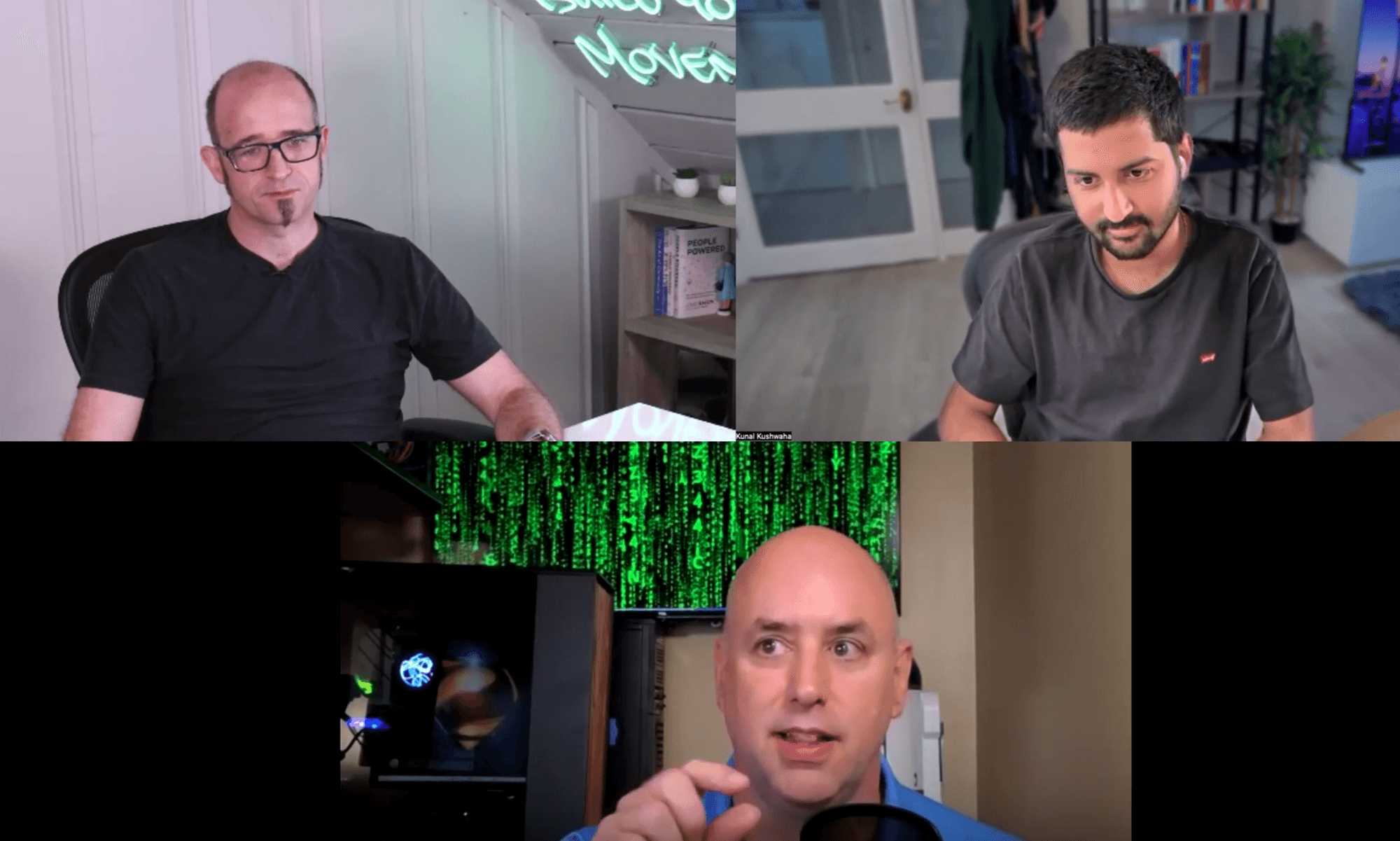More teams are turning to YouTube developer marketing because it’s one of the few channels where you can teach, demonstrate, and build trust with developers at the same time. But the question still comes up in every DevRel or GTM meeting:
“How do we market to developers without sounding promotional or losing credibility?”
Developers are allergic to hype. But they’re loyal to people who help them solve real problems. That’s why YouTube has quietly become a core part of developer marketing — not because “video is hot,” but because it rewards clarity, honesty, and real expertise.
During a recent Expert Session at Stateshift Live, we brought in Kunal Kushwaha, a Field CTO at CIVO who has built a YouTube channel of 680,000+ subscribers by doing exactly that. His channel is one of the best examples of YouTube developer marketing done right: simple, consistent, problem-first teaching that meets developers where they already are.
Here are the 10 lessons he shared — and how they translate into a trust-first approach to reaching developers on YouTube.

Know Your Developers Better Than Anyone
Kunal’s growth on YouTube didn’t come from guessing. It came from listening — comments, analytics, recurring questions, and patterns in what developers were struggling with.
His audience wanted deeper Kubernetes content, so he leaned into it. That shift became a major inflection point.
This is the heart of YouTube developer marketing:
Create content that solves real developer problems, not content that aligns with an internal launch calendar.
Stateshift sees this pattern in nearly every ecosystem audit — trust grows when you respond to the problems developers already have.
The fastest way to grow trust on YouTube is simple:
Solve the problems developers already have — not the ones you wish they had.
Practical Tip: Use YouTube’s analytics to identify what content is resonating most with your viewers. Read comments and pay attention to recurring questions—these will give you clues on what to focus on next.
Consistency Is Key
Kunal stressed that consistent posting is vital for growth, both in terms of audience retention and YouTube’s algorithm. For his own channel, he committed to posting at least once a week. By doing so, he ensured his audience knew when to expect new content, which helped build loyalty and trust.
In the early stages, Kunal wasn’t always able to produce high-quality videos due to time constraints, but his consistent schedule helped him build momentum. Over time, as his production process improved, he was able to produce better-quality videos without missing deadlines.
One of the biggest mistakes teams make with YouTube developer marketing is treating it like a campaign instead of a rhythm. Kunal committed to weekly videos even before he had strong production quality. Developers don’t need cinematic content — they need reliable, useful help.
Stateshift calls this a Movement Rhythm: a repeatable cadence of content that keeps developers engaged, learning, and coming back because they trust your voice.
Practical Tip: Set a realistic posting schedule based on your bandwidth. Kunal suggests starting with one video per week and gradually scaling up as you get more comfortable.
3. Start Simple, Then Refine
Many teams assume YouTube developer marketing requires high-end production. It doesn’t.
Kunal’s advice: just start. He shared how his initial videos weren’t perfect—his camera quality was average, and his editing was basic—but what mattered was the value he provided.
Over time, as his channel grew, he reinvested in better equipment, like a higher-quality microphone and better lighting. These upgrades didn’t happen overnight but were part of an ongoing process of refinement.
For example, one of Kunal’s first videos on Kubernetes was shot using a basic webcam and natural lighting. Despite the modest production quality, it quickly became one of his most-watched videos because the content filled a gap in the market.
Practical Tip: Use what you have and improve over time. Focus on delivering valuable content and worry about perfecting production later.
4. Solve Real Problems
Kunal’s channel took off when he began focusing on problem-solving content. For developers, this meant creating tutorials that addressed common challenges, such as setting up Kubernetes clusters or troubleshooting Docker issues.
By providing practical, actionable solutions, Kunal’s videos became resources that viewers returned to over and over. His how-to content not only drove engagement but also positioned him as a go-to expert in the DevRel space.
This approach exemplifies effective YouTube developer marketing—providing genuine value rather than promotional content. Based on Stateshift’s work with 240+ companies, this authentic problem-solving approach consistently builds stronger developer communities than traditional marketing tactics.
For example, one of Kunal’s most popular videos, “Kubernetes Tutorial For Beginners” walks viewers through a common problem step-by-step. It continues to generate views months after it was uploaded, thanks to the evergreen nature of the topic.
Practical Tip: Think about the top problems your audience faces and create videos that address those challenges. This type of content tends to have long-term value, keeping viewers coming back.
5. Thumbnails + Title = Views
Kunal emphasized that thumbnails and titles are your video’s first impression. No matter how good the content is, if your thumbnail and title aren’t enticing, viewers may scroll past. He shared that his early thumbnails were simple screenshots from his videos, but he soon realized the importance of creating eye-catching visuals.
As he experimented, he found that clear, bold text and vibrant colors worked best for his audience. Similarly, his titles shifted from generic descriptions to more engaging phrases that included keywords his audience was searching for.
For example, for a video about getting started with Kubernetes setup he initially used a plain screenshot. After redesigning the thumbnail with a bolder color scheme and including the text “Step-by-Step Guide,” the click-through rate increased by 15%.
Practical Tip: Use tools like Canva to design thumbnails, and make sure your titles include keywords people are actively searching for. Test different styles to see what works best for your audience.
6. Engage With Your Viewers
Building a community around your channel is essential for growth, and Kunal is a firm believer in engaging with viewers. He makes an effort to reply to comments, ask for feedback, and incorporate suggestions into future videos. This creates a sense of connection and loyalty among his viewers.
For example, after posting a video on Kubernetes, Kunal received a lot of questions in the comments about integrating it with Jenkins. Rather than just replying, he created a follow-up video addressing this integration, which not only helped his audience but also drove engagement on both videos.
This community-building approach is exactly how successful companies build engaged developer communities that drive product adoption through consistent value delivery and authentic interaction.
Practical Tip: Allocate time after uploading a video to respond to comments. Ask viewers questions to encourage interaction and consider creating follow-up content based on their suggestions.
7. Experiment with Different Formats
Kunal learned early-on that experimenting with video formats keeps his content fresh and engaging. He started with tutorial-style videos but later introduced live coding sessions, Q&A videos, and behind-the-scenes vlogs. Each format offered something different to his audience and helped him cater to different viewer preferences.
For example, his live coding sessions attracted viewers who wanted to see real-time problem-solving, while his vlogs gave a more personal insight into his day-to-day work. These live coding sessions were initially a risk as he wasn’t sure if his audience would enjoy them. But after trying it out, the feedback was overwhelmingly positive, leading him to make live streams a regular part of his content strategy.
Practical Tip: Don’t be afraid to try different video formats. Whether it’s a tutorial, vlog, or live stream, diversifying your content keeps your audience engaged and gives you a better understanding of what resonates.
8. Leverage Data and Analytics
Kunal regularly uses YouTube analytics to refine his content strategy. He shared how, by monitoring his audience retention rates, he was able to identify which parts of his videos were losing viewers. This insight helped him make changes to his video structure, such as cutting down introductions and getting to the main content faster.
He also pays close attention to watch time, click-through rates, and traffic sources to understand which videos are driving the most engagement and why.
For example, Kunal noticed that his average audience retention dropped significantly during the first two minutes of several videos. By cutting down on lengthy intros and getting straight into the content, he was able to increase retention by 20%.
Practical Tip: Review your YouTube analytics regularly to identify patterns in audience behavior. Use these insights to make data-driven adjustments to your content strategy.
9. Collaborate with Other Creators
Collaboration is one of the fastest ways to grow a YouTube channel. Kunal has collaborated with other developers and tech influencers in his niche, which allowed him to tap into their audiences. These collaborations ranged from guest appearances on each other’s channels to co-hosting live streams.
As one example, Kunal partnered with another tech YouTuber for a series of videos on DevOps tools. This collaboration not only introduced him to a new audience but also provided more value to his existing viewers by offering a fresh perspective.
Practical Tip: Look for creators in your niche and reach out for potential collaborations. Cross-promoting each other’s content can introduce you to new subscribers and diversify your content.
10. Stay Adaptable and Open to Feedback
Finally, Kunal emphasizes the importance of adaptability. YouTube is always evolving, and what works today may not work tomorrow. Kunal shared how his early focus on certain technologies shifted as trends changed in the tech industry. By staying open to feedback and adjusting his content, he was able to stay relevant.
For instance, when he noticed a rising interest in AI tools among developers, he quickly adapted his content to cover this trend, which helped him stay ahead of the curve.
Practical Tip: Pay attention to trends in your niche and be willing to adjust your content accordingly. Don’t hesitate to try new topics or formats if they align with what your audience wants.
Where Stateshift Fits In
If you’re building developer-facing content—especially on YouTube—the real challenge isn’t creativity. It’s consistency, clarity, and understanding what actually matters to your audience.
At Stateshift, we help technical teams build the systems, rituals, and content flows that developers trust.
But even if you’re doing it yourself, start here:
Solve one real developer problem every week.
Stay consistent.
Listen closely.
Trust will follow you.
FAQ: YouTube Developer Marketing
Does YouTube developer marketing actually work?
Yes — but only when done with trust at the center. Developers follow creators who teach them something useful, not brands who pitch. The best-performing channels focus on problem-solving content, clear tutorials, and authentic expertise. YouTube is simply the medium; trust is the mechanism.
What’s the best way to market to developers through YouTube?
Focus on solving real problems with actionable tutorials and consistent value delivery. Developers respond to authentic expertise, not promotional content.
How can YouTube help build engaged developer communities?
By creating problem-solving content that positions you as a trusted expert, YouTube naturally attracts developers and builds community around shared challenges and solutions.
Final Thoughts: YouTube Developer Marketing as a Trust Engine
If there’s one lesson from Kunal’s journey, it’s this:
Developers trust people who help them get unstuck — not people who market at them.
That’s why YouTube developer marketing works so well. It’s a channel built around teaching, transparency, and real-time problem solving. For developers, that’s exactly what builds trust.
Whether you’re a dev-heavy startup or a scaling technical platform, the path is the same:
- Start simple
- Teach clearly
- Publish consistently
- Solve problems that matter
- Build relationships, not impressions
At Stateshift, we help teams systematize this approach — with frameworks, rhythms, and community rituals that create meaningful, repeatable developer engagement.
But even if you’re building it yourself, start here:
Publish one useful video.
Then another next week.
Solve a real problem.
Respect developers’ time.
Trust will compound.
That’s how movements — and developer communities — grow.
Ready to build developer audiences through content? Stateshift specializes in helping tech companies build communities of engaged developers through strategic content marketing. We provide hands-on guidance for YouTube, blogging, social media, and community platforms. Check out how we help companies build developer audiences that drive product adoption. If you are interested in learning more about how we work with companies, check out more about how we work with clients at Stateshift.





